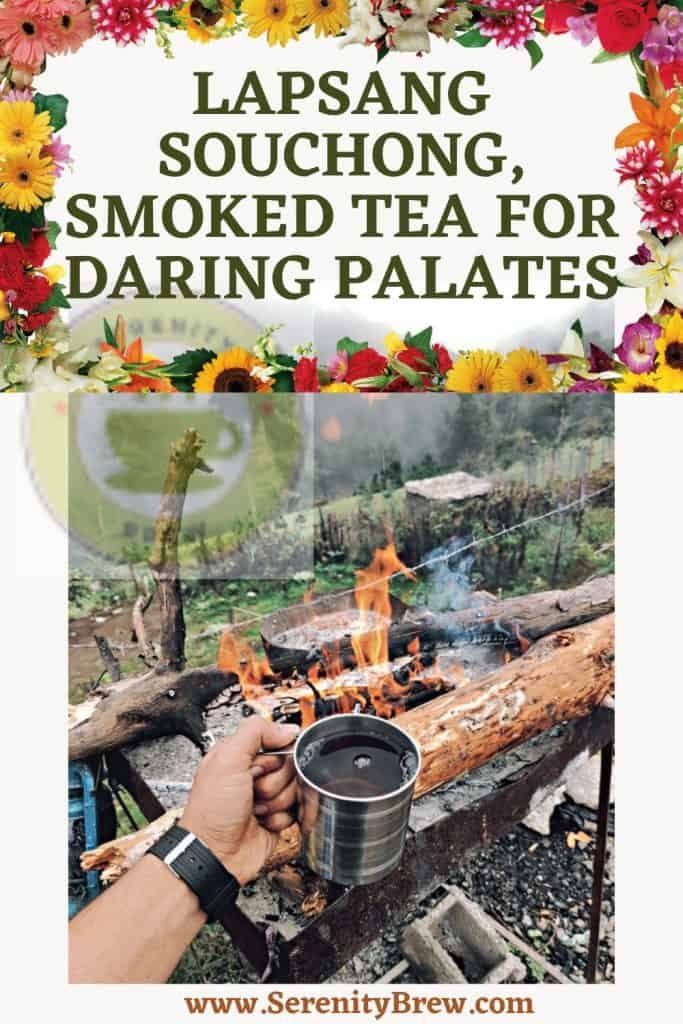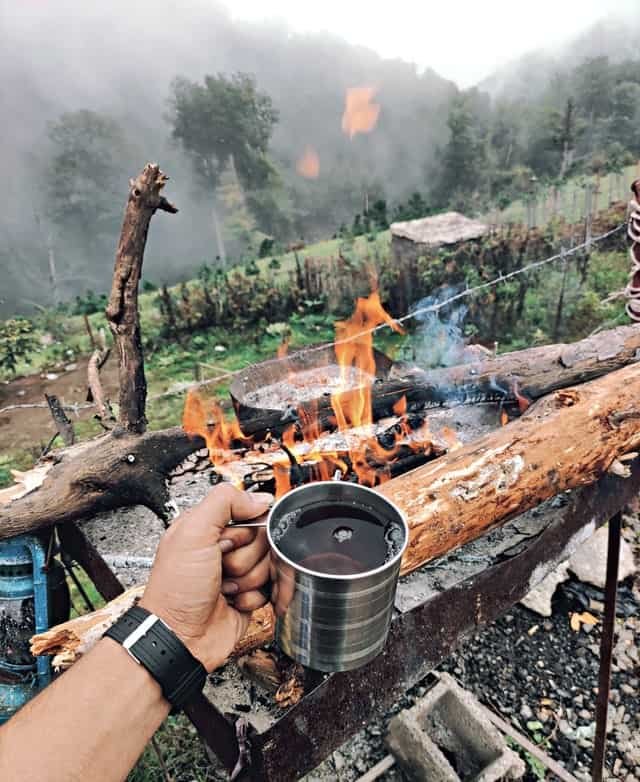
Lapsang Souchong is the famous tea from the Chinese mountains of Wuyi. Although it is a black tea, it has an unusual feature in its family: it is smoked.
In the tea industry, it is common to classify tea leaves by qualities based on their proximity to the plant’s bud. Souchong is the name given to the fourth and fifth leaves counting from the bud of a tea bush branch.
The leaves closest to the bud are considered to be of better quality, so Lapsang leaves would be considered to be of lower quality, less aromatic and tender.
On the other hand, Lapsang means to smoke, so the name is self explanatory. To make Lapsang Souchong, the tea leaves are smoked over pine wood fires, a tree that is very common in the Wuyi Mountain area.
With smoking, a more attractive product for the market is obtained from a base of lesser quality. Perhaps for this reason, in China, this tea has a certain reputation in China for being a tea “for foreigners”; but don’t be swayed, this is an excellent tea with a strong character.
Taste
The Lapsang Souchong is one of those things that you either love or hate. The smoking process leaves an intense flavor with a lot of character, not suitable for all palates.
In parallel to the notes of smoke, the range of flavors that you can find in a Lapsang goes through the warm and toasted, with faint floral or slightly fruity aromas. The infusion of this tea is full-bodied and offers a strong finish, which lengthens on the palate.
The intensity of its flavor makes it suitable for pairing with foods with powerful flavors.
In the kitchen
An interesting topic without a doubt is the uses that are given to Lapsang Souchong in the kitchen. It is possible to use it as a spice to transfer its smoky taste to other dishes.
Just grind it as fine as possible and store it in an airtight container. It is very good to give that touch of embers and charcoal to grilled meats or fish such as salmon.
You can also opt for the liquid version. To achieve this, simply infuse it as we would for a tea but shortening the amount of water (half a cup for a couple of tablespoons of tea). It is also possible to do it with oil or with milk or cream, for use in desserts.
History
There are several legends about how the Lapsang Souchong came to be. Most refer to the chance that the first tea was smoked.
Lapsang Souchong is said to have emerged during the Qing dynasty, a turbulent time of great political upheaval in China.
Legend has it that a group of bandits descended on the village of Tong Mu Guan with the purpose of looting it. At that time, the locals had just harvested the tea, which they had carefully stored under wooden decks to finish drying.
The bandits ravaged the village, wreaking havoc and setting fire to the villagers’ houses. The fire reached the pinewood structures under which the tea was stored.
Much did not resist burning, but a part was saved, which absorbed the smoke from the bonfires of this hell.
When the survivors recovered it, they realized that, miraculously, something good had been born from this disaster.
As in all old stories, there are several variants of this legend. The truth is that we will never know if smoking the tea was a blessed chance or the wise decision of an ancient Chinese farmer.
Production process

The manufacturing process of Lapsang Souchong is long and complex. It goes through the following phases.
Harvest
The tea leaves are harvested during the weeks of May, much later than other types of tea due to the particular climate of the Wuyi mountains.
wilting
Green leaves wilt in the sun or by hot air currents in a controlled environment.
rolled up
Tea leaves are rolled manually or mechanically with the aim of slightly damaging them. This serves to promote the natural oxidation process of the tea.
Oxidation
The tea is placed in bamboo baskets and covered with a thick cloth. During this phase, the leaves change color from green to reddish brown.
Cooking
The tea leaves are fried in large woks to stop the oxidation process.
rolled up
The initial rolling stage is repeated to ensure that the sheet maintains its shape.
Smoked
The most characteristic stage of the manufacturing process of this tea. The tea leaves are spread over bamboo sieves and then placed in a brewhouse to dry over a pine wood fire. The tea absorbs the smoke, creating its characteristic woody, smoky flavor and aroma.
And that’s it, Lapsang (smoke) Souchong (tea leaves), right?
